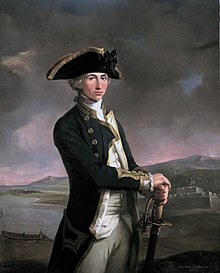Lapel
Usually it is formed by folding over the front edge of the jacket or coat and sewing it to the collar, an extra piece of fabric around the back of the neck.
The notched lapel, the most common, is usually seen on business suits, and on more casual jackets like blazers and sport coats.
On single-breasted jackets the left lapel typically carries a buttonhole for holding a boutonnière, a decorative flower.
The most common style of lapel, the notched lapel, originated in older types of jackets that buttoned to the neck, by unbuttoning and turning back the upper part of the closure at an angle indoors or in hot weather, and then removing the upper buttons.
This can be duplicated by similarly turning back the closure in a modern button-to-the-neck garment such as an overcoat or a boilersuit.
As tailcoats evolved rapidly among the wealthy during the Regency period, various styles of closure saw popularity, from fastenings at the top, the middle, or even hanging open.
The turn-down collar popular on earlier garments like the frock was succeeded by long lapels folded down to below the waist (fashionably tightly nipped in).
Once double breasted frock coats were established, lapels were sharply creased and their form was more static, varying only in details such as height, since they were buttoned nearly to the neck by the Edwardians, then lengthened to the classic three-button shape, the two-button jacket being a further American innovation.






